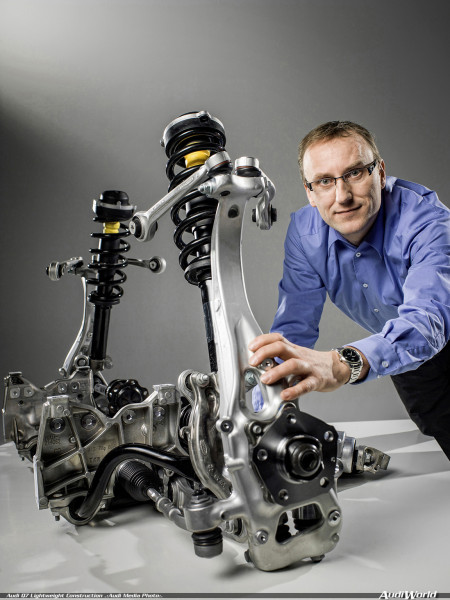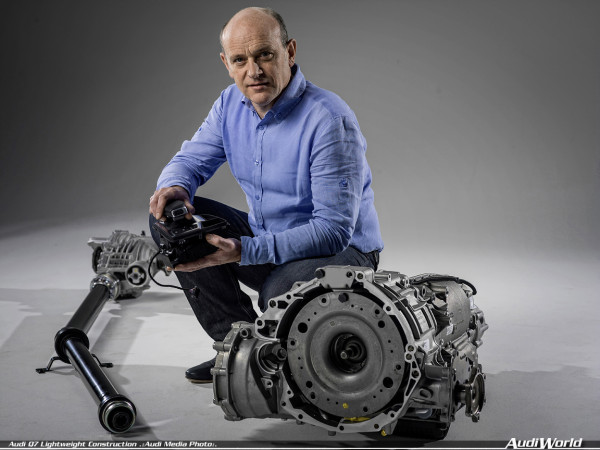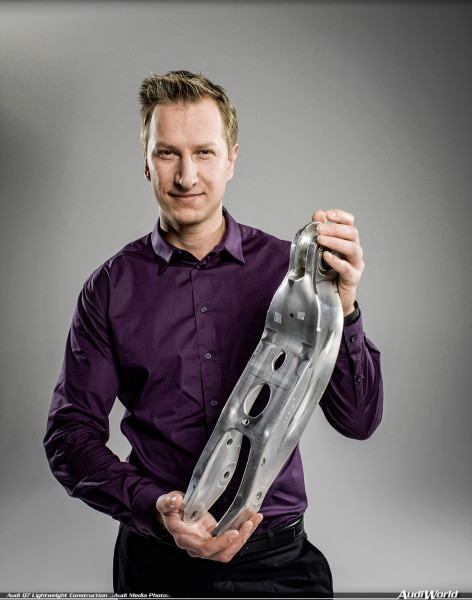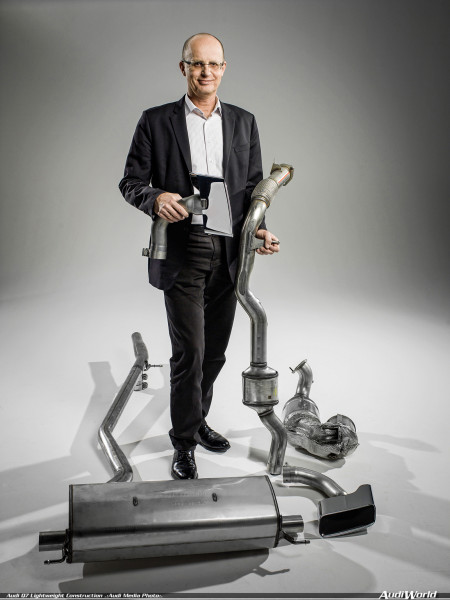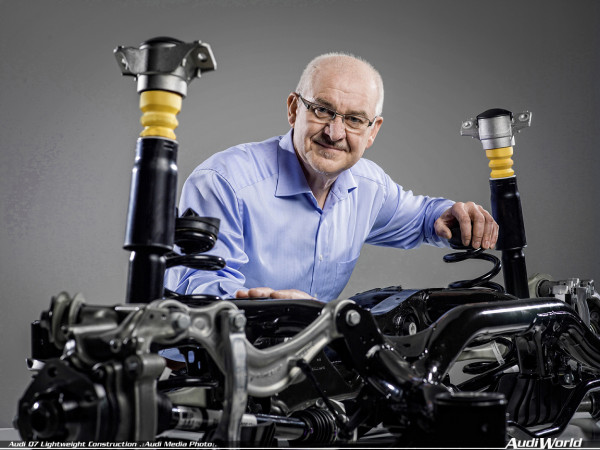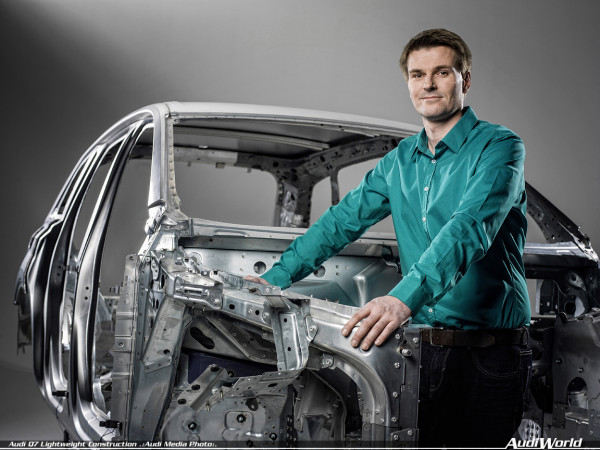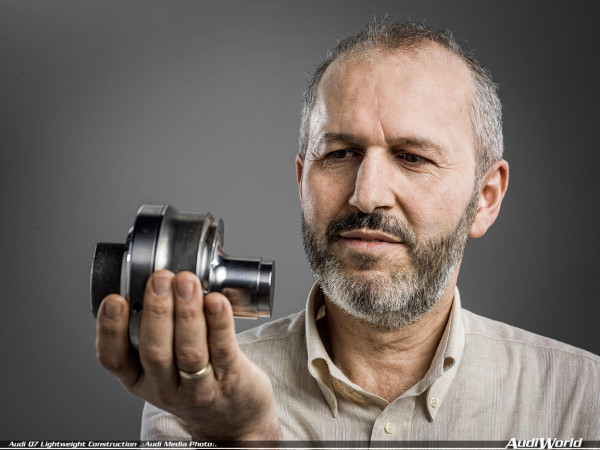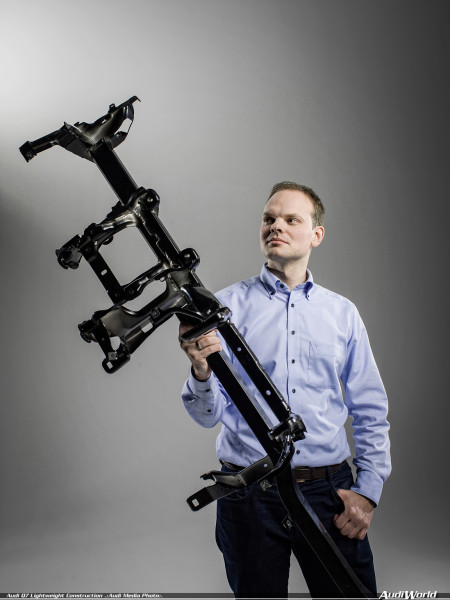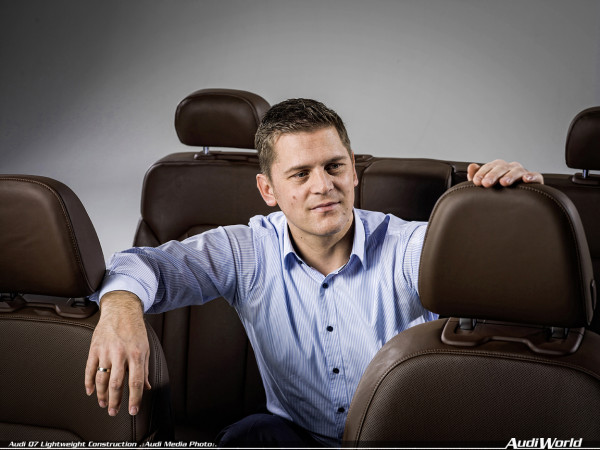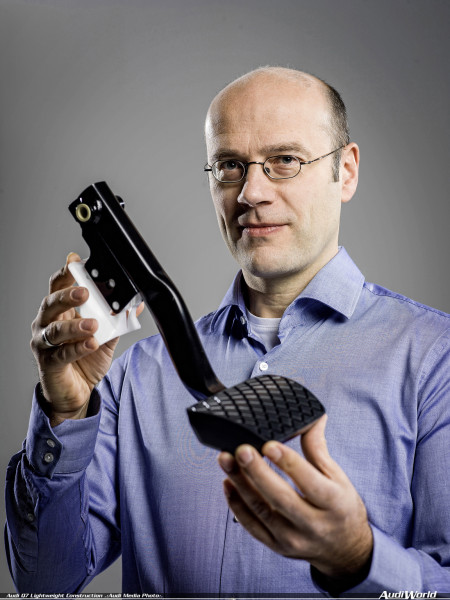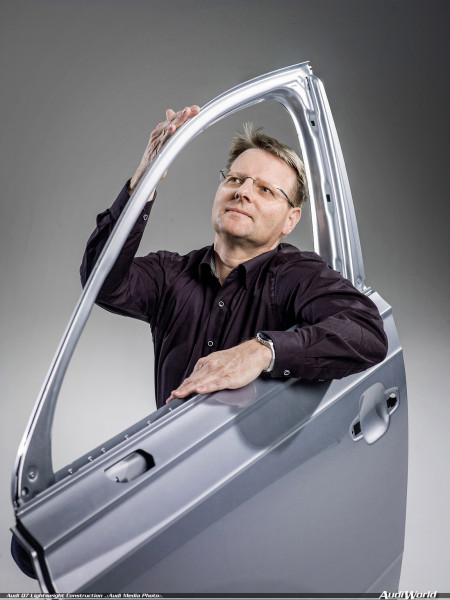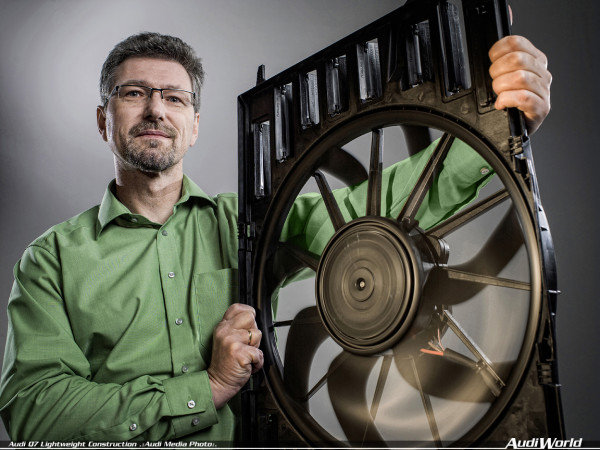Audi’s lightweight construction benefits the Q7
Alexander Steigerwald, Audi Q7 front axle development.
Thanks to the new five-link front axle and systematic lightweight construction, 27 kilograms (59.5 lb) of weight have been shaved from the front axle alone compared with the previous model. All major components are made of aluminum. The forged aluminum pivot bearing alone saved nearly 7 kilograms (15.4 lb).
Alfred Rehr, Audi Q7 drivetrain development.
The Q7 drivetrain, including selector lever, is 20 kg (44.1 lb) lighter compared with the previous model. The quattro drivetrain accounts for most of this weight reduction, with a smaller amount attributable to the selector lever.
Andreas Ottinger, Audi Q7 aluminum spring link development.
The new Q7 extruded aluminum spring links are the first on the market and in this segment. This alone enabled a reduction of nearly 4 kilograms (3.7 kg) [8.8 lb (8.2 lb)] of weight.
Boguslaw Jan Nowak, Audi Q7 exhaust system development.
The completely new Q7 exhaust system is 19 kilograms (41.9 lb) lighter than the previous version.
Friedrich-Oskar Winter, Audi Q7 rear axle development.
The new five-link rear axle is 40 kg (88.2 lb) lighter compared with the previous model, which is particularly noticeable in terms of improved comfort and agility. This result was made possible by an intelligent material mix featuring high-strength steels for the subframe and links, and the targeted use of aluminum.
Hendrik Risch, Audi Q7 multimaterial body development.
Thanks to an intelligent, multimaterial design 71 kilograms (156.5 lb) of body weight were saved compared with the first-generation Q7.
Ismail Akin, Audi Q7 center differential development.
The self-locking center differential is integrated into the housing of the eight-speed tiptronic and is the heart of the quattro all-wheel drive system. This system is 25 percent lighter than the previous version.
Jörn Hansel, Audi Q7 cockpit cross car beam development.
Despite greater functionality and better performance, Audi has reduced the weight of the cockpit cross car beam by over 40% compared with the previous version.
Marcus Haberer, Audi Q7 seat development.
A new generation of modular seats helped to reduce the weight of the Q7 front seats by 5 kg (11.0 lb). The Q7 comes standard with five seats. The extremely comfortable three-seat rear bench with adjustable seatbacks is up to 13.7 kilograms (30.2 lb) lighter than its predecessor. The combined weight of all the seats represents a weight saving up to 18.7 kilograms (41.2 lb) compared with the first-generation Q7.
Thorsten Bojarra, Audi Q7 brake pedal development.
Audi is the first carmaker in the premium SUV segment to use an aluminum brake pedal, reducing the weight of this component in the new Q7 by 60%.
Wolfgang Faaß, Audi Q7 door development.
Just like the body panels, the doors of the new Q7 are made entirely of aluminum. Here alone 24 kilograms (52.9 lb) of weight were saved compared with the previous model.
Xaver Hackl, Audi Q7 cooling fan module development.
The components of the cooling system are 8.7 kilograms (19.2 lb) lighter compared with the previous version. With this cooling fan module, for example, the weight was reduced by 3.5 kilograms (7.7 lb).

